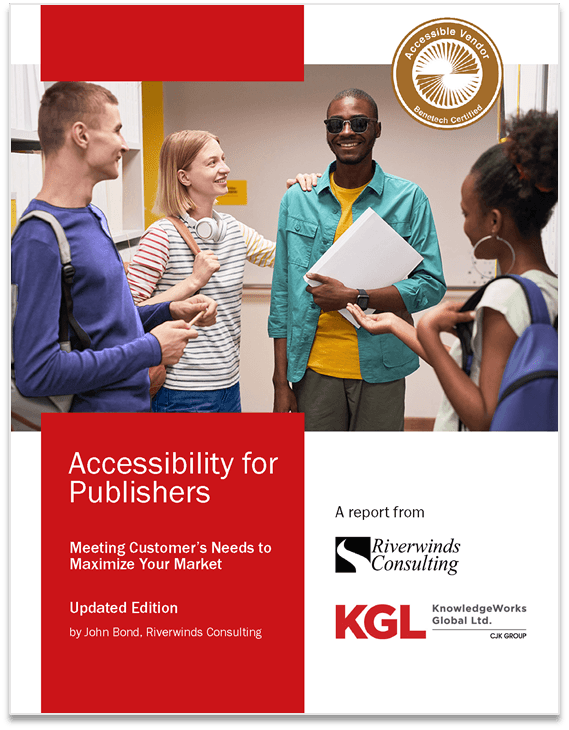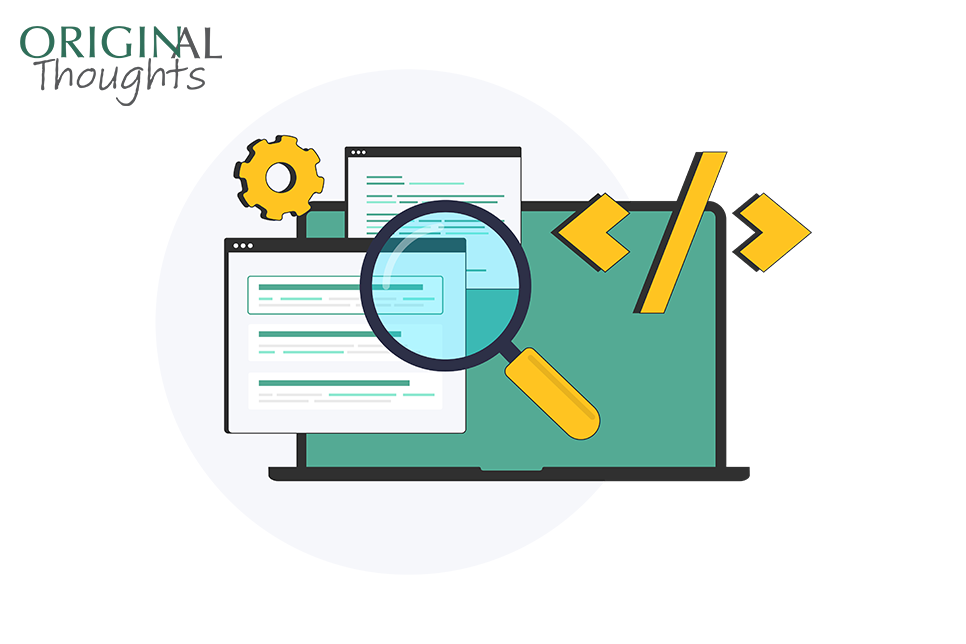by KnowledgeWorks Global Ltd.
Two years ago, we (as Cenveo at the time) hosted a panel discussion at the SSP Annual Meeting, which brought the subject of accessibility to the center stage and helped shine a spotlight on the importance of making content accessible to readers with disabilities, such as learning difficulties and visual impairments. To mark Global Accessibility Awareness Day (#GAAD), we take a look at how this landscape is evolving and how scholarly publishers are now actively improving access to academic research.
A lot has changed in these last two years. The global pandemic sparked a rapid shift to remote and distant learning all over the world, expediting the need for improved accessibility to digital resources. Meanwhile, in the US, the Department of Justice (DOJ) began to enforce the 2010 Americans with Disabilities Act (ADA), demanding that all academic institutions make their digital learning materials accessible to all students, including the 20 percent who are classified as disabled. A spate of high-profile discrimination lawsuits against various universities and libraries with poorly accessible online resources followed, implicating a range of institutions–from state universities as far afield as Colorado and California to Ivy League players like Harvard and Princeton–along with many others.
Complying with these rules and ensuring that nobody is left behind is now a priority for both academic institutions and publishers alike, as Judy Cobb, Manager of Digital Platforms at OhioLINK, explained: “Libraries are under increasing pressure to ensure all platforms and content meet the highest digital accessibility standards and we need our vendors to understand how important this is to us.” For publishers, the lesson has become crystal clear: fully accessible content for the customer and end user is now an imperative, both from a societal and commercial perspective. Subsequently, many publishers are now adopting “born accessible” models in an effort to meet the expectations of the academic community and comply with newly enforced standards.
A good example of a “born accessible” journal publisher is Georgetown University Law Center–an early adopter of accessible content strategies in the legal space and contributor to one of our previous webinars on accessibility in publishing. A website redesign back in 2016 brought to light accessibility issues and set the Center on a new mission to become a leader in this field, stretching far beyond Alt text and Section 508 compliant PDFs. Anna Selden, Associate Director of Publications, commented: “We want to make sure that any reader who finds our content useful is able to access it to its fullest capability… As far as I know, we are one of the first law schools to tackle this, so we’re laying the groundwork we hope for other institutions.”
As part of the SEO and Accessibility panel at KGL PubFactory Virtual Series user group meeting last October, we featured Dwyer Scullion from Oxford University Press (OUP). His presentation underscored the growing importance of accessibility to OUP, asserting that accessibility has “become central to OUP’s mission… our platforms must be usable by all,” with a goal to “embed accessibility in everything we do” and “design for all regardless of disability, location, economic situation, culture, education.” He went on to openly discuss where the publisher is currently at on its accessibility journey, highlighting where its sites still fall short and what still needs to be done. He concluded that it is important to remember that this is a process and a journey, and that a publisher “should never consider it ‘done.’”
For KGL PubFactory’s lead design partner, Tracey Greene from Digital Artisans, the commercial benefits which can be reaped from making online content more accessible to all users are really coming to the fore. She remarks that there has been “a massive shift in understanding the importance of accessibility – not only from a legal standpoint, but also in terms of the ROI it delivers for publishers via increased discoverability and improved usability.” In a prior series of blogs on user experience strategy, she describes how accessible websites now only improve SEO and provide quicker access via Google Scholar, for example, but that intuitive, user-friendly design and careful attention to things like font size and color contrast can help drive higher user conversions.
In a world where remote online access has become king and publishers are inching ever closer towards digital-first publishing programs, online platforms are now taking precedence. Accessibility is rapidly becoming one of the essential pillars of scholarly publishing. Ignore it and you risk alienating your customers and being overtaken by your competitors. But embrace it and you can expand your reach, attract new customers and readers and gain market share, not to mention make a fundamental difference.
KnowledgeWorks Global Ltd. (KGL) is a champion of digital equality. For further resources and guidance on accessibility standards and compliance for journals, books, digital media, websites, eLearning, and more, visit kwglobal.com/accessibility or email us at info@kwglobal.com.






